Bahamian Food Dishes: Basic Overview
Common Ingredients
Common Cooking Methods
Courses
Meals
Key Taste
Eating Etiquette
Meal Presentation
Culinary Festivals
Influence and Fusion
Popular Types of Bahamian Dishes
-
Cakes and Pastries
Bahamian cakes and pastries are a delightful array of baked goods that often feature tropical ingredients such as coconut, guava, and rum.
These desserts range from the dense and moist, to the flaky and sweet.
The baking methods and ingredients reflect the islands’ rich cultural heritage, incorporating British influences with local Bahamian flavors.
-
Desserts
Bahamian desserts are a celebration of the islands’ bounty, favoring sweetness and rich, fruity flavors.
They typically feature local produce, with a preference for tropical fruits, and are often enhanced with island-produced rum for an added depth of flavor.
These desserts range from puddings and cakes to candies, showcasing a variety of textures from creamy to crunchy.
-
Fried Dishes
Fried dishes in The Bahamas are characterized by their golden, crispy exteriors and tender, flavorful interiors.
Utilizing a variety of proteins and vegetables, these dishes are often seasoned with a unique blend of local spices, offering a savory and sometimes spicy kick.
-
Soups
Soups in Bahamian cuisine are hearty, warming, and brimming with flavor.
They often feature a rich base filled with an array of local seafood or meats and are infused with a blend of spices and herbs unique to the region.
Vegetables and legumes add body and nutrition, making these soups a satisfying and wholesome option.
-
Stews
In The Bahamas, stews are a culinary staple, known for their depth of flavor and hearty ingredients.
These slow-cooked dishes meld the flavors of meats or seafood with a variety of local vegetables and spices, creating a rich and comforting meal.
The stewing process allows the ingredients to become tender and the flavors to become concentrated.
-
Rice Dishes
Rice dishes in Bahamian cuisine are a versatile and integral part of the diet, often serving as the foundation for a variety of meals.
These dishes are known for their ability to absorb and complement the flavors of accompanying ingredients, whether they be rich stews, vibrant vegetables, or spicy proteins.
Bahamian dishes are culinary creations that can be found all over The Bahamas, a Caribbean country. As a blend of indigenous culture, Southern US cuisines, British fare, and African treat, they represent The Bahamas’ multicultural heritage and form a key part of its culture.
Well-known Bahamian dishes fall into many categories, mostly soups, stews, bread, rice dishes, fried dishes, and sweet treats.
These dishes contain local ingredients, such as rice, peas, tropical fruits, spices, meat, and, most importantly, seafood. They are often prepared with methods like boiling, stewing, and deep-frying.
For each popular Bahamian dish, I will provide information about its origin, type of food, main ingredients, cooking method, serving suggestions, what it is served as, history, and other special features, like alternative names, where it is also popular, flavor profile, and so on.
Next, you will have an overview of factors that make Bahamian dishes popular, essential ingredients in Bahamian cuisine, and suggested drink pairings to try in The Bahamas.
Here are the 21 most popular Bahamian dishes to discover:
21 Popular Bahamian Dishes with Filters
Uncover the various dishes of the Bahamas, using the filter system to give you a better look at them in alphabetical order, tastes, ingredients, cooking techniques, dish types, and global popularity.
Plus, I’ll make sure to give you some information about the styles of culinary employed in the Bahamas, including the most popular, national, traditional, and street food options:
Conch Fritter
- Street Food
- Traditional
Conch fritters are a popular appetizer originating from The Bahamas and the Florida Keys, made from minced conch meat that is mixed into a seasoned batter with cornmeal and diced vegetables such as onions, bell peppers, celery, and jalapeños.
The mixture is enhanced with lemon juice, tomato paste, black pepper, and Creole seasoning, then shaped into balls and deep-fried until golden.
These fritters are typically served hot, accompanied by a variety of dipping sauces like cocktail sauce, mayonnaise, or ketchup, offering a crispy exterior and a tender, flavorful interior.
Conch Salad
- Street Food
- Traditional
Conch salad is a salad from The Bahamas with tenderized conch meat as the main ingredient. The conch meat is marinated in citrus juice and combines onions, bell peppers, cucumbers, tomatoes, hot chili peppers, salt, and black pepper.
Preparing conch salad is the best way to savor raw conch meat in The Bahamas. Mainly served as an appetizer, conch salad pairs harmoniously with popular Bahamian drinks like Sky Juice or Kalik beer.
Boiled Fish
- Traditional
Boiled fish is a well-loved Bahamian stew inspired by British colonists and American immigrants. The main ingredient of boiled fish is white fish. Nassau grouper is the ideal choice, but the fish are hard to find during the off-season.
Therefore, snapper or mahi mahi make good substitute ingredients for Bahamian boiled fish. The fish is gently stewed with onions, potatoes, celery, and a flavorful mix of lime juice, butter, garlic, thyme, hot chili peppers, cloves, and bay leaves.
You can enjoy boiled fish as a main course or breakfast with bread, johnnycakes, or grits. Fish ‘n’ grits (boiled fish and grits) are a staple combo.
Boiled fish is a usual sight at Christmas gatherings, Lent, and on Sunday afternoons after church services. In some ways, this seafood stew is similar to Louisiana seafood boils.
Cracked Conch
- National
- Street Food
- Traditional
Cracked conch is a Bahamian-style snack similar to British fish and chips. Cracked conch is crafted from conch meat, a chewy sea snail native to the region.
Conch meat is “cracked” (pounding the conch meat to tenderize it), flattened, breaded in all-purpose flour with spices, and deep-fried.
This Bahamian fried snack is like combining fried calamari and chicken tenders. Cracked conch makes for a tasty appetizer or main course. Its ideal accompaniments include tartar sauce, a tangy blend of fresh lime juice and goat peppers, French fries, or peas n’ rice.
Cracked conches are a favorite fast food and a staple of Bahamian street food. This staple Bahamian snack even has an annual Conch Cracking Festival in McLean’s Town, Grand Bahama Island.
Crab and Rice
- Traditional
Crab and rice is a common Bahamian rice dish laden with land crabs, pigeon peas, and rice. These ingredients are typically simmered along with herbs and veggies like garlic, tomatoes, onions, bell peppers, thyme, and fiery goat peppers.
Crab and rice is like a heartier version of peas n’ rice and has a strong trace of West African roots. This Bahamian combo was most likely carried over by the Gullah people from the southern US. Nowadays, there are many different versions to try, like crab and dough or crab and grits.
Locals often accompany crab and rice with steamed or pan-fried fish, fried plantains, or a tangy coleslaw.
Souse
- Traditional
Souse is a Bahamian stew with a fascinating history. Souse began as a cold meat jelly in Europe but was reinvented in a warmer form in The Bahamas. Here, locals use “souse” as both a noun and a verb, which signify the dish and the preparation procedure, respectively.
Bahamian souse is prepared using a diverse range of meats (such as oxtail, pig’s feet, or chicken) simmered with onions, lime juice, celery, and a well-picked selection of spices. This version is served piping hot, similar to a hearty soup or broth.
Paired with grits, bread, or johnnycakes, souse is usually a main dish and breakfast item in The Bahamas. Variations of souse such as pig foot, oxtail, and chicken souse have gained popularity in the Southern US and other global locales.
Conch Chowder
- Traditional
Conch chowder, or conch soup, is a hearty soup that is a staple in Bahamian cuisine, featuring conch, a type of large sea snail, as its main ingredient. This savory dish is enriched with a variety of vegetables and seasoned with a blend of local spices.
This iconic Bahamian seafood soup is best served with crackers or muffins as a main course. Beyond The Bahamas and the Caribbean, conch chowder is popular in Honduras and Florida Keys in the US. However, harvesting conches in the US is illegal due to overfishing concerns.
Bahamian Stewed Fish
- Traditional
Bahamian stewed fish captures the essence of white fish (such as turbot, snapper, blue marlin, or grouper) that are pan-fried and then simmered in a toasted roux sauce.
Other flavorful additions to Bahamian stewed fish include flour, potatoes, onions, tomato paste, vegetable oil, lime juice, thyme, and various spices. The result is a tender and flaky fish with a bold flavor broth.
Bahamian stewed fish’s roots traced back to Creole immigrants from Haiti in the early 19th century. Like souse, Bahamian stewed fish usually goes with grits, bread, or johnnycakes as a great main course. Locals love to enjoy the combo for a hearty breakfast.
Peas And Dumpling Soup
- Traditional
Peas and dumpling soup is a Bahamian version of split pea soup, offering a comforting fusion of British and African influences. For the dumplings, locals combine all-purpose flour, baking powder, coconut milk, and salt.
The soup part of this Bahamian soup dish is a hearty blend of pigeon peas, ham, tomatoes, onions, bell peppers, carrots, and potatoes, all simmered with coconut milk and thyme. Plus, you can add goat peppers or Scotch bonnet peppers if you like a little heat.
Served alongside johnnycakes, peas and dumpling soup is a satisfying main course. Variations include the Long Island-style soup that may incorporate sweet potatoes and plantains.
Fire Engine
- Street Food
- Traditional
Fire engine is a Bahamian breakfast dish popularly known as steamed corned beef. By sautéing canned corned beef with onions, celery, bell peppers, tomatoes, tomato paste, and Bahamian goat pepper, locals create a tasty yet economical morning meal.
This hearty Bahamian breakfast dish is excellent at pairing with grits or rice. Fire engine is also a much-loved street food across The Bahamas: Many people consider it a hangover cure.
Fire engine is high in energy and surprisingly easy to cook. Though the origins of its unique name remain a mystery, the bold and spicy character of the fire engine certainly ignites the palate, much like a fire engine rushes to extinguish flames.
Chicken In Da Bag
- Street Food
Chicken in da bag is a well-known Bahamian street food featuring chicken, all-purpose flour, citrus fruit, eggs, buttermilk, thyme, and spices. The chicken is deep-fried until golden and crispy, then served in a paper bag.
This Bahamian chicken-based staple has a rich, greasy flavor profile and is easily on par with Bahamian conch burgers or fish burgers in terms of popularity. This Bahamian chicken street food is often enjoyed with French fries, dinner rolls, ketchup, or hot sauce.
Johnnycake
- Traditional
Johnnycake is a famous bread originating from Native American tribes in North America, the johnnycake got its name in the 1730s and then found its way to The Bahamas via Americans who remained loyal to the British after the American Revolution.
The Bahamian version of Johnnycake stands out by using all-purpose flour instead of traditional cornmeal, resulting in a dense texture akin to bread. In its homeland, johnnycakes are known by various names, such as Shawnee cake, journey cake, and hoecake.
Johnnycakes are a favorite side dish for savory Bahamian dishes or butter and cheese. The golden bread usually comes in thick slices from a large round pan. People also enjoy johnnycakes as a breakfast item.
Peas n’ Rice
- Traditional
Peas n’ rice is a traditional Bahamian dish of West African origin. This savory rice dish is a spin-off from the Akan tribe’s Waakye (a dish of cooked rice and beans) in Ghana, which enslaved Africans brought to the West Indies, including The Bahamas.
The main ingredients of Bahamian peas n’ rice include pigeon peas and rice simmered in a caramelized sugar-based sauce. Unlike other Caribbean rice dishes, peas n’ rice stands out for a darker caramelized sauce.
In addition, the peas n’ rice version of The Bahamas doesn’t use coconut milk. Locals often use garlic, thyme, bell peppers, and bacon to create a nutrition-packed side dish that pairs perfectly with many Bahamian specialties. Peas n’ rice is ideal for breakfast or as a side dish.
Grits
- Traditional
Grits is a well-liked type of cornmeal porridge in The Bahamas that many locals adore. Grits is a filling yet inexpensive porridge that came from the Southern US, invented by the Native American Muskogee tribe.
Made from boiled ground corn and water, grits has a coarse texture that is distinct from the smoother, finely ground yellow corn in polenta. In The Bahamas, milk or broth can be used instead of water to infuse grits with additional flavors.
Bahamians serve it as a side dish or as a hearty breakfast with corned beef, tuna, or rich Bahamian dishes. Besides The Bahamas, grits is popular in the US and several Caribbean islands.
Mac and Cheese
- Traditional
Mac and cheese is a familiar Bahamian dish made with macaroni pasta baked in a cheddar cheese-based sauce. While the definition may remind you of Southern US mac and cheese, the Bahamian version stands out in many ways.
For example, Bahamian mac and cheese uses evaporated milk and eggs, not regular milk and dairy products like the American variation. In addition, mac and cheese in The Bahamas usually contains hot peppers like habanero or Scotch bonnet peppers.
Mac and cheese came to The Bahamas thanks to English colonists. Its rich, creamy, and spicy flavor makes it a well-liked side dish to pair with many savory dishes, especially those with seafood like conch chowder. Some locals like to add ketchup to their servings.
In The Bahamas, you can find mac and cheese in ordinary and holiday gatherings, from Sunday meals to Christmas feasts and so on. This cheesy baked dish is often served in squares and is a nostalgia-inducing food for Bahamians living abroad.
Guava Duff
- Traditional
Guava duff is a beloved pudding in The Bahamas, often considered the national dessert. Guava duff is a simple blend of all-purpose flour, baking powder, milk, butter, salt, and sugar, with the addition of guavas. The name “duff” comes from an old English term for pudding.
This Bahamian pudding is steamed or boiled with the dough wrapped in a cheesecloth or white cotton fabric layer. While you could use various fruits, guava is the most popular option for making duff.
A sauce made with rum, condensed milk, and spices like nutmeg or allspice is ideal for perfecting guava duff, which is always served warm.
Rum Cake
- Traditional
Rum Cake is a popular dessert in Bahamian cuisine, known for its moist texture and rich flavor, infused with rum. This dessert originated in the Caribbean in the 18th century.
This sweet treat is often made using a sponge cake base, which is then soaked in a rum-based syrup to enhance its taste and aroma, making it a favorite for celebrations and festive occasions.
Don’t let the name fool you since the rum content in the Bahamian rum cake is quite modest. But the cake still gets a distinct and rich flavor, especially when made with Bahamian rum. Rum cake pairs beautifully with whipped cream, ice cream, fresh fruits, or a cup of tea or coffee.
Rum cake is a favorite dessert during Christmas, New Year’s, and other holidays in The Bahamas, other Caribbean countries, and the US.
Benny Cake
- Traditional
Benny cake is a popular Bahamian candy made from sesame seeds, sugar, and water. The name “benny” comes from another name for sesame seeds, the star ingredient in this delightful dessert.
The process of making benny cakes involves simmering these ingredients together until they achieve the same consistency as peanut brittle. Instead of peanuts, the crunchy texture and nutty flavor here come entirely from sesame seeds.
Bahamian benny cakes pair excellently with a cup of tea or coffee. They are a wonderful way to explore the interesting features of Bahamian cuisine.
Coconut Tart
- Traditional
Coconut tart is a beloved dessert in the Bahamas that consists of a bready pastry crust filled with a sweet mixture of grated coconut, sugar, and spices like nutmeg. Locals often add a second layer of dough on top of the filling.
The coconut tart is then baked until the filling is set and the crust is golden. Due to its simplicity, coconut tarts are easy to find all over The Bahamas. Some versions replace coconut with other types of fruits for the filling. The most popular variation is the pineapple tart.
Cassava Bread
- Traditional
Cassava bread is a well-known type of bread in The Bahamas and many Caribbean countries, where locals like to use it as a substitute for wheat flour bread. This bread variety is gluten-free as it consists of greeted cassava, milk or coconut milk, and optional spices.
Sometimes, Bahamian cassava bread can include other types of starch, like oat flour or potato starch, to improve its consistency. With a slightly sweet and chewy flavor, cassava bread is a delicious side dish to enjoy with many Bahamian main course items.
Bread Pudding
- Traditional
Bread pudding is a desired dessert in Bahamian cuisine. Like many other local dishes, it originated in England and arrived in the Bahamas due to English colonists.
The Bahamian version of bread pudding usually consists of soaked stale bread, butter, evaporated milk, eggs, sugar, vanilla, raisins, and, occasionally, spices.
The inclusion of evaporated milk and spices makes Bahamian bread pudding very special. It illustrates how local ingredients distinguish popular Bahamian dishes from similar dishes in other regions.
What Makes Bahamian Dishes Popular?
The 5 features that popularize Bahamian dishes are listed below:
What Beverages Popularly Pair With Bahamian Dishes?
Here are 5 suggestions for beverages that commonly pair with Bahamian dishes for a wonderful culinary experience:
These famous Bahamian beverages are very refreshing and a match made in heaven for many popular Bahamian dishes.
Now, you can share this list of Bahamian dishes with everyone so they can plan their gastronomic trip to The Bahamas. Contribute to the comment section so that others can learn about your experience enjoying Bahamian dishes!



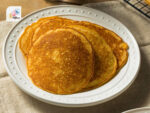
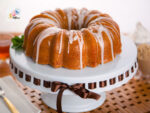

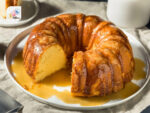

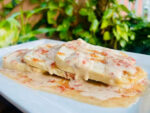
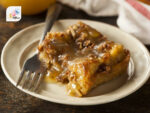
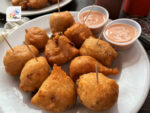
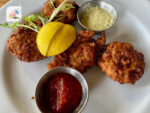
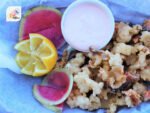
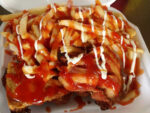
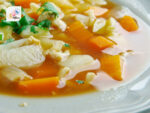
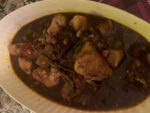
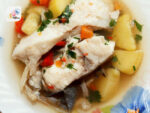
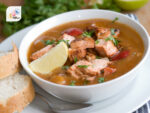
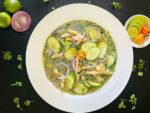
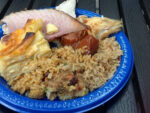
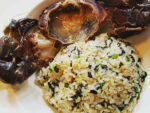
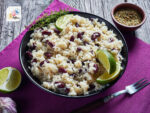
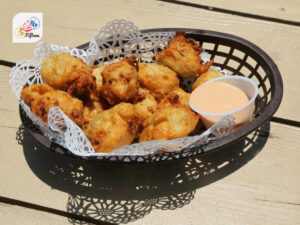
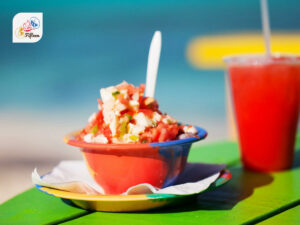
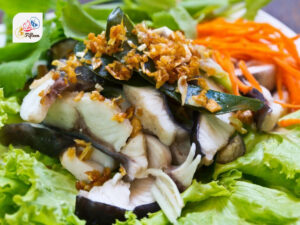
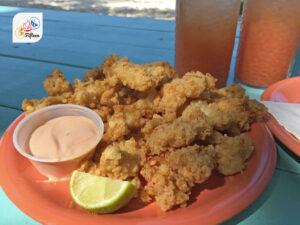
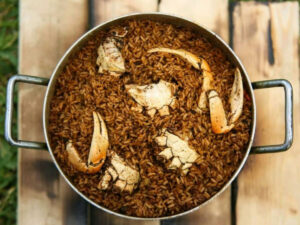
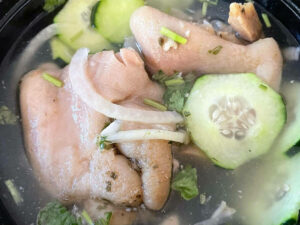
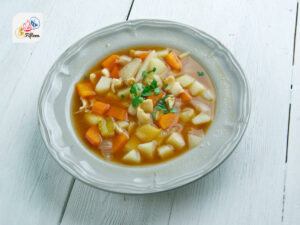
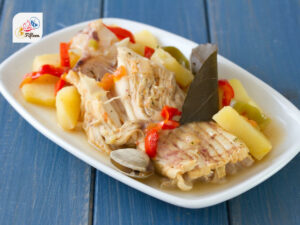
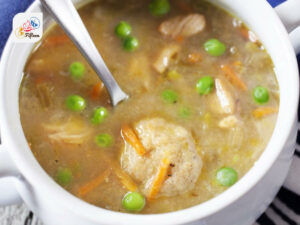

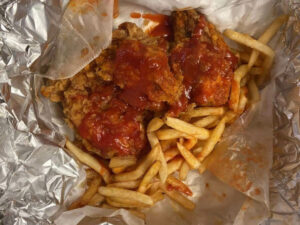
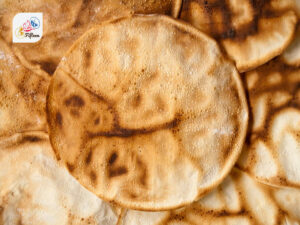
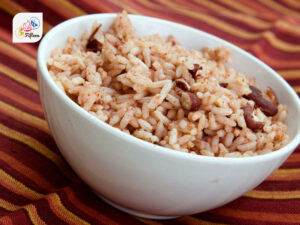
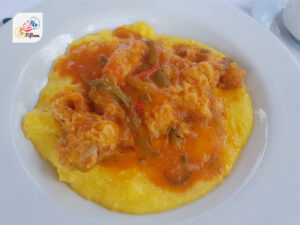
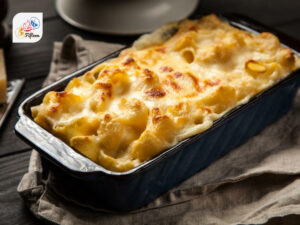
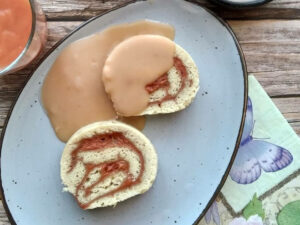
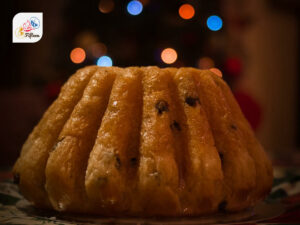
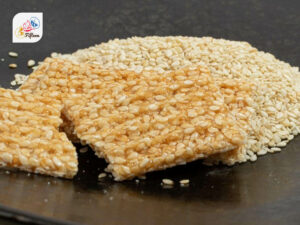
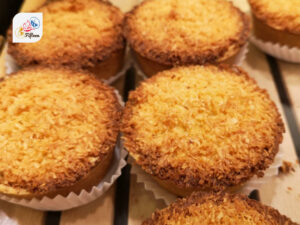
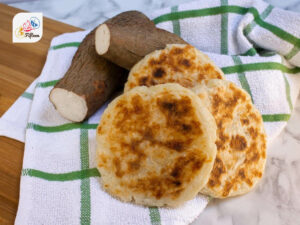
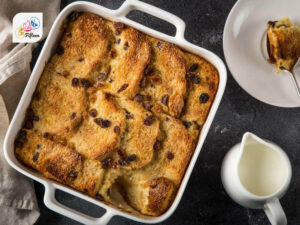
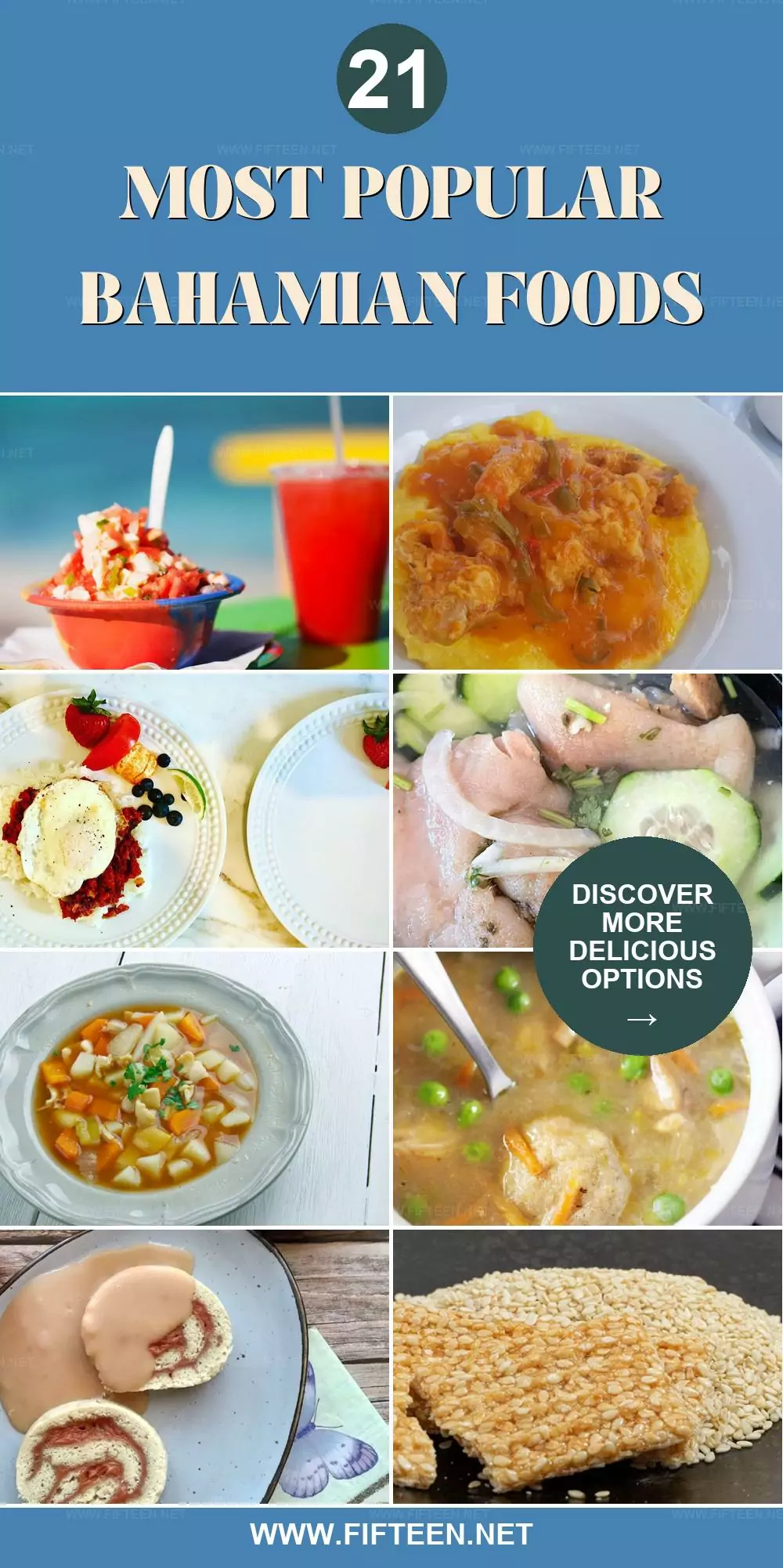
Jamie Scott
Editor in Chief, Senior Content Writer
Expertise
Home Cooking, Meal Planning, Recipe Development, Baking and Pastry, Food Editor, Cooking-video Maker, Western Food Evaluation Expert
Education
Le Cordon Bleu College of Culinary Arts
Local Community College, New York, NY
Jamie Scott is a skilled culinary expert and content creator specializing in Western cuisine. With over 15 years in the culinary field and formal training from Le Cordon Bleu, Paris, Jamie deeply understands how to blend nutrition with delicious flavors. His passion for cooking matches his commitment to making healthy eating accessible and enjoyable.
On Fifteen.net, Jamie brings a fresh perspective to classic dishes and beverages, offering readers insightful recipes, cooking tips, and a fresh view on meal planning that emphasizes taste, health, and simplicity.